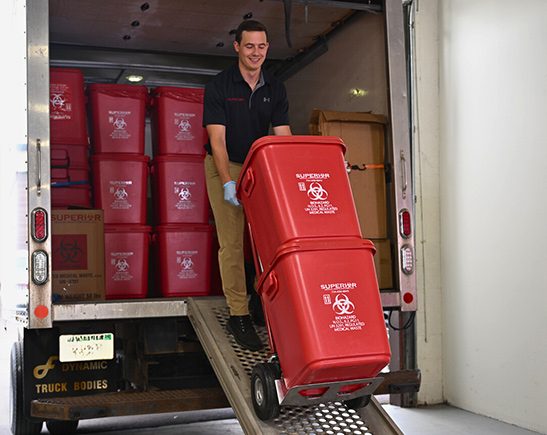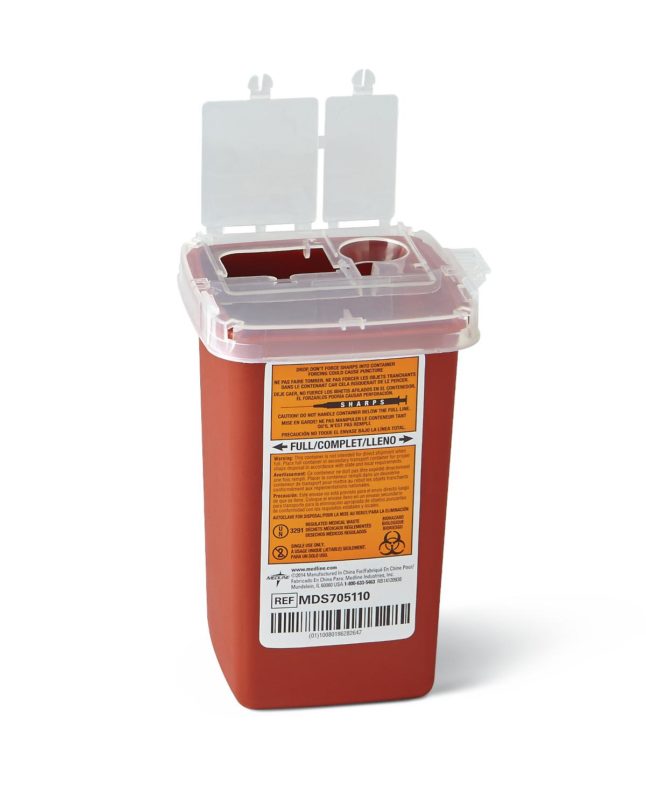Guardians of Tidiness: Resident Medical Waste Removal Service for Your Comfort
Wiki Article
Remain Ahead of Rules: Expert Recommendations on Medical Garbage Disposal
In a world where the medical care industry is regularly advancing, it is necessary for clinical facilities to stay in advance of guidelines when it comes to the appropriate disposal of medical waste. With strict guidelines and regular governing adjustments, it can be testing to navigate the complexities of this process. With experienced suggestions, centers can make sure conformity and alleviate dangers linked with incorrect waste disposal. From comprehending the different classifications of clinical waste to applying the appropriate collection and partition techniques, this discussion will provide actionable suggestions and important insights to aid centers remain ahead of laws in the ever-changing landscape of clinical waste disposal.Recognizing Medical Waste Categories
Understanding clinical waste categories is necessary for proper disposal and monitoring in health care facilities. Medical waste describes any waste created by health care tasks that may present a hazard to public health or the setting. It is vital to categorize clinical waste properly to guarantee its secure handling, treatment, transport, and disposal.There are a number of classifications of medical waste that health care centers require to be knowledgeable about. One of the most usual groups include infectious waste, pathological waste, sharps waste, pharmaceutical waste, and chemical waste. Each category has details guidelines and regulations for its correct administration and disposal.
Pathological waste refers to human cells, organs, or body parts that require special handling and disposal. Pharmaceutical waste makes up run out, unused, or infected medications that require cautious handling and disposal.
Staying Up-To-Date With Regulatory Modifications
Remaining existing with governing modifications is critical for healthcare facilities to make sure compliance and appropriate monitoring of medical waste disposal. medical waste removal near me. With guidelines frequently developing, it is important for healthcare centers to stay up-to-date to prevent penalties, fines, and possible harm to the atmosphere and public healthTo remain ahead of regulatory modifications, medical care centers should establish a system for tracking and tracking updates. This can be done by registering for regulatory newsletters, participating in meetings and workshops, and proactively joining sector associations. In addition, centers ought to mark an employee or group in charge of remaining educated and disseminating details to relevant stakeholders.
Regular interaction with regulative firms is additionally vital. Health care facilities ought to develop partnerships with neighborhood, state, and federal firms to guarantee they know any kind of modifications in laws that may impact their waste management techniques. This can be done through routine conferences, engagement in public remark durations, and proactive involvement with regulative agencies.
Additionally, medical care facilities should think about partnering with waste management companies that concentrate on clinical waste disposal (medical waste disposal services with WasteX). These business are usually fluent in the latest guidelines and can offer assistance and support to make certain compliance
Executing Appropriate Collection and Segregation Techniques
To properly handle clinical garbage disposal, health care centers have to develop correct collection and partition approaches based on governing guidelines. Applying these techniques ensures the secure handling and disposal of potentially dangerous products, safeguards the environment, and lessens the danger of injuries and infections to medical care employees and the basic public.
Proper collection and partition methods involve using marked containers and classifying systems. Health care facilities ought to supply clearly classified containers for different sorts of medical waste, such as sharps, contagious waste, pharmaceutical waste, and non-hazardous waste. These containers should be color-coded and plainly marked to stay clear of complication and promote very easy recognition.
In addition, medical care centers need to educate their personnel on the right procedures for gathering and segregating clinical waste. This includes informing them on the various kinds of waste, the proper containers to utilize, and the relevance of adhering to laws and guidelines. Normal training sessions and correspondence course ought to be performed to ensure that employee continue to be current on best methods.
Moreover, medical care facilities must develop a system for normal collection and disposal of medical waste. This may include partnering with licensed waste monitoring business that focus on medical waste disposal. These business will certainly make sure that the accumulated waste is carried and dealt with in compliance with governing requirements.
Picking the Right Disposal Approaches

Incineration is just one of the most common and effective methods for disposing of specific types of medical waste, such as pathological waste and sharps. It involves the controlled burning of waste at heats, decreasing it to ash. Nevertheless, incineration can launch hazardous contaminants into the air and add to air contamination.

Chemical treatment entails the usage of chemicals to disinfect and reduce the effects of the waste. Microwave treatment utilizes microwave energy to warm and decontaminate the waste.
Making Sure Compliance Through Documentation and Training
After carefully thinking about the suitable disposal methods for clinical waste, healthcare centers should make sure compliance with guidelines and minimize environmental impact by applying efficient documents and training treatments. This step is critical in keeping a check here risk-free and sustainable environment for both health care employees and the basic public.
Training is just as essential in guaranteeing conformity with policies. Healthcare workers who take care of clinical waste ought to obtain suitable training on waste segregation, managing, and disposal treatments. This training should cover topics such as the proper use personal protective devices, identification of different kinds of waste, and the correct Find Out More disposal methods for every waste group. By providing comprehensive training, medical care centers can encourage their personnel to make educated decisions and decrease the risk of inappropriate waste disposal.
Verdict
To conclude, staying in advance of regulations in clinical garbage disposal is important for healthcare facilities. medical waste removal near me. Understanding the different groups of clinical waste, remaining upgraded with governing changes, carrying out appropriate collection and segregation methods, picking the proper disposal approaches, and making sure compliance via paperwork and training are all important steps. By following these guidelines, medical care organizations can properly handle and get rid of of medical waste in a safe and responsible wayFrom understanding the various groups of clinical waste to executing the best collection and segregation approaches, this discussion will certainly provide actionable tips and useful insights to assist facilities stay ahead of guidelines in the ever-changing landscape of clinical waste disposal. - medical waste disposal services with WasteX
The most usual groups include infectious waste, pathological waste, sharps waste, pharmaceutical waste, and chemical waste. Healthcare facilities should give plainly labeled containers for various types of medical waste, such as sharps, contagious waste, pharmaceutical waste, and non-hazardous waste. Health care facilities ought to develop a detailed system to tape-record and track all facets of clinical waste disposal, including kinds of waste generated, quantities, and disposal methods used. Medical care workers who manage medical waste must get suitable training on waste segregation, dealing with, and disposal procedures.
Report this wiki page